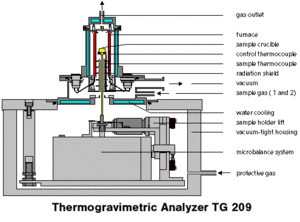Thermal Analysis
Application

Thermal analysis
Thermal analysis (TA) offers the ability to evaluate and compare materials. The information TA provides includes:
- Curing kinetics
- Thermal stability (in different environments)
- Oxidative stability
- Purity
- Degree of cure
- Thermal expansion rates (negative and positive)
DSC (Differential Scanning Calorimetry)
Measures heat and temperature of transitions such as Tg, isotherms, crystallization, and melting.
Thermogravimetric Analysis (TGA)
Measures weight changes up to 1000°C
Thermomechanical Analysis (TMA)
Measures dimensional changes. The maximum temperature is 800°C. These techniques can be performed at or below room temperature.
Sample Information
DSC and TGA samples may be in solid or liquid form. Larger samples may have to be ground or cut into a suitable size. TMA samples must have parallel top and bottom faces, a maximum height 25mm, and a maximum diameter of 9.5mm.
Information Obtained
- Bulk: measures changes for the entire sample
- Quantitative data (with standards)
- Qualitative data
- Molecular: Organic and Inorganic
- Crystalline Phases: DSC can monitor phase transitions.
- Thermochemical provides information as a function of temperature.